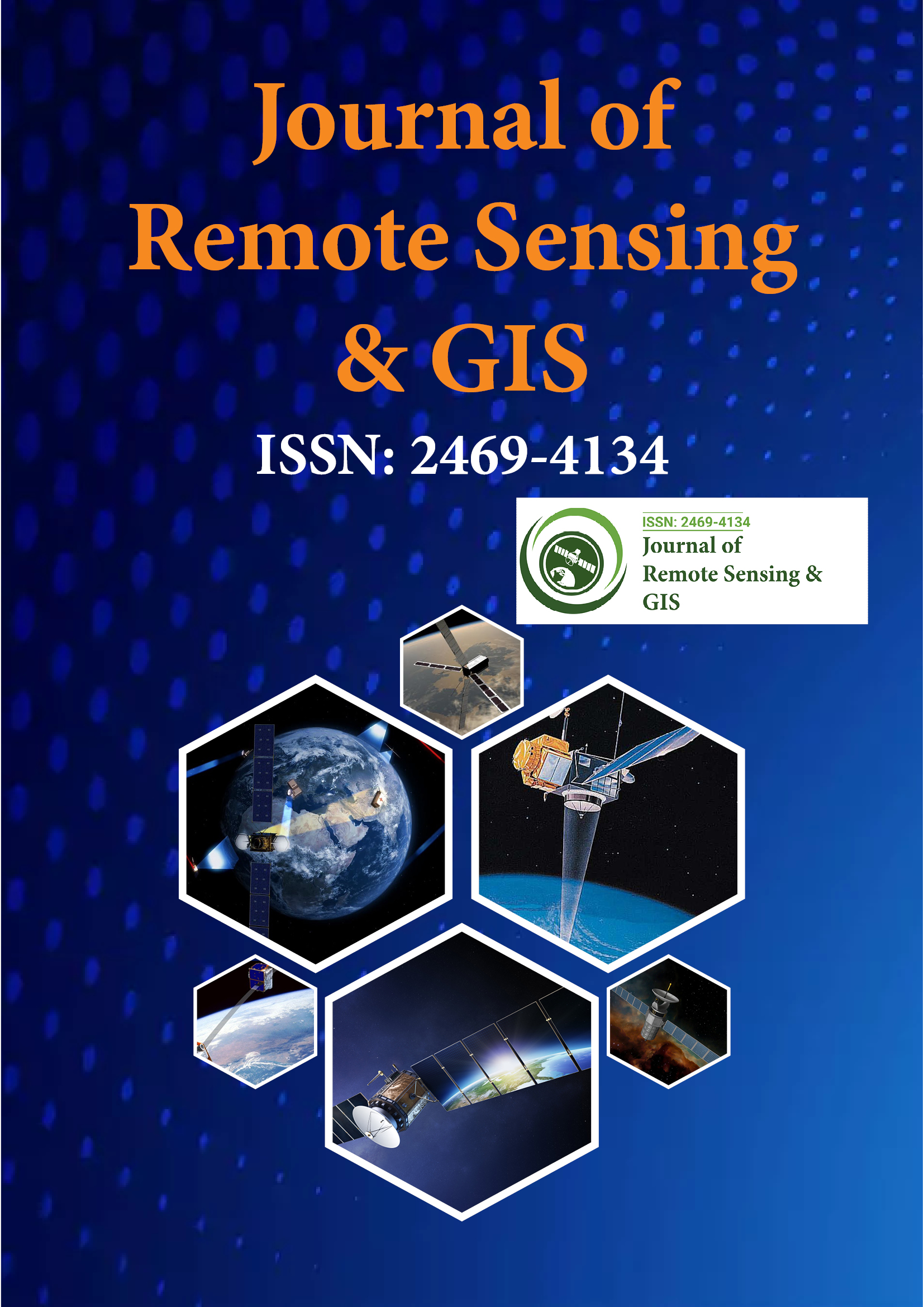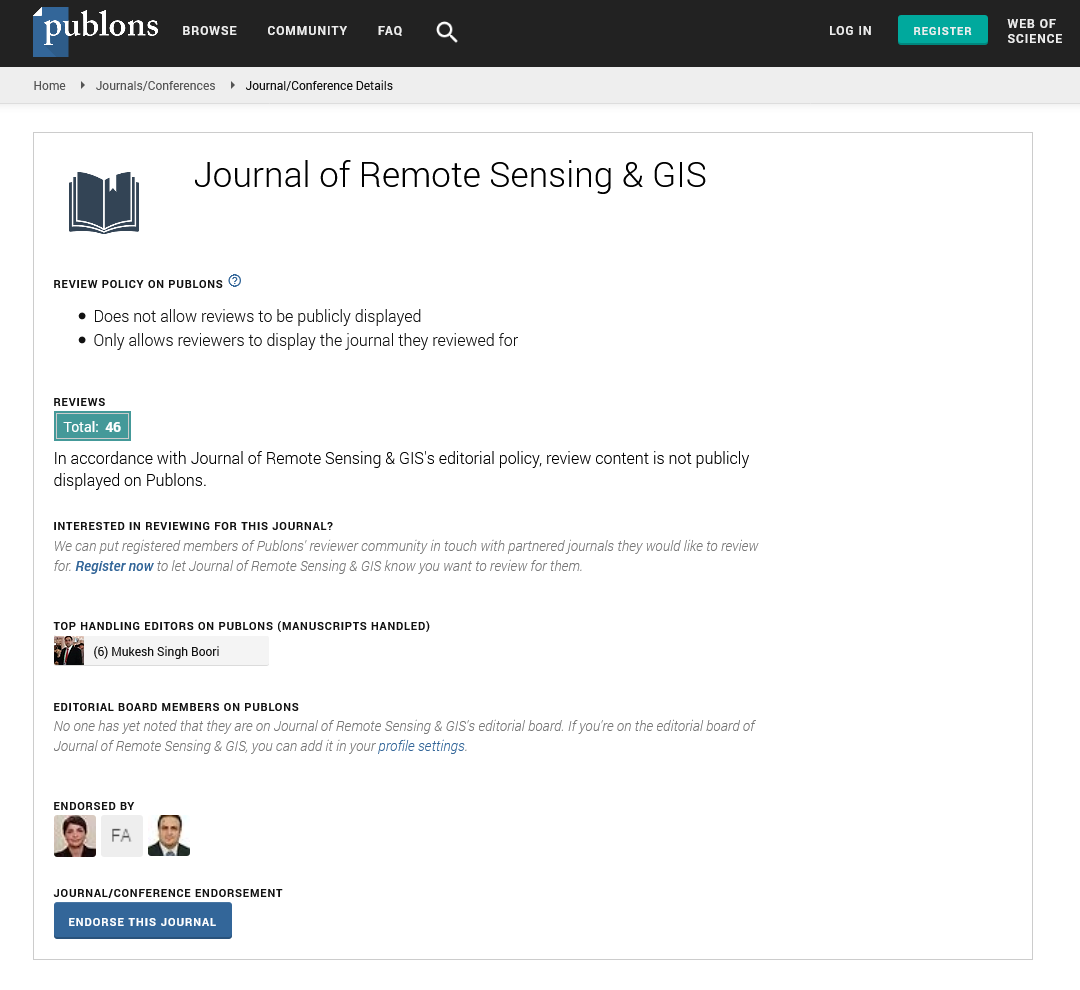Indexed In
- Open J Gate
- RefSeek
- Hamdard University
- EBSCO A-Z
- OCLC- WorldCat
- Publons
- International Scientific Indexing
- Euro Pub
- Google Scholar
Useful Links
Share This Page
Journal Flyer

Open Access Journals
- Agri and Aquaculture
- Biochemistry
- Bioinformatics & Systems Biology
- Business & Management
- Chemistry
- Clinical Sciences
- Engineering
- Food & Nutrition
- General Science
- Genetics & Molecular Biology
- Immunology & Microbiology
- Medical Sciences
- Neuroscience & Psychology
- Nursing & Health Care
- Pharmaceutical Sciences
Opinion Article - (2024) Volume 13, Issue 4
Marine Pollution Detection and Mitigation through Remote Sensing and GIS Technology
Jos Wrangler*Received: 25-Nov-2024, Manuscript No. JGRS-24-28066; Editor assigned: 27-Nov-2024, Pre QC No. JGRS-24-28066 (PQ); Reviewed: 12-Dec-2024, QC No. JGRS-24-28066; Revised: 20-Dec-2024, Manuscript No. JGRS-24-28066 (R); Published: 27-Dec-2024, DOI: 10.35248/2469-4134.24.13.366
Description
Marine ecosystems are essential to global biodiversity and human livelihoods. However, marine pollution poses significant threats to these ecosystems, stemming from oil spills, plastic waste, chemical discharges and other pollutants. Recent advancements in technology, particularly in remote sensing and Geographic Information Systems (GIS), have introduced new methods for monitoring, managing and mitigating marine pollution.
Remote sensing involves the acquisition of information about the Earth's surface without direct contact, typically through satellite imagery or aerial sensors. GIS, on the other hand, is a framework for collecting, managing and analyzing spatial and geographic data. Together, these tools provide an effective platform for detecting, mapping and analyzing pollution in marine environments.
Remote sensing technologies detect pollutants using various spectral bands, capturing data that can identify oil slicks, algal blooms, or suspended sediments. GIS complements this by integrating and analyzing the spatial data collected, enabling decision-makers to visualize pollution patterns and implement targeted solutions.
Applications in detecting and monitoring marine pollution
One of the primary uses of remote sensing in marine pollution control is the detection and tracking of oil spills. Synthetic Aperture Radar (SAR) is a widely used tool for this purpose, as it can operate in all weather conditions and during night-time. SAR images reveal oil slicks as dark patches against the brighter ocean background, providing timely information for containment and clean-up operations.
Optical remote sensing, using multispectral and hyperspectral sensors, is another approach for monitoring marine pollution. These sensors can differentiate between various pollutants based on their spectral signatures. For instance, they are effective in identifying algal blooms caused by nutrient pollution, which often lead to harmful effects like hypoxia and fish die-offs.
Plastic pollution, a growing concern in marine ecosystems, is also being addressed through these technologies. Remote sensing methods, combined with machine learning algorithms, are now being used to estimate the concentration of floating plastics in oceans. By analyzing spectral data, researchers can map the distribution of plastic waste, aiding clean-up efforts.
GIS for mapping and analysis
GIS serves as an important tool in understanding the spatial dynamics of marine pollution. By using remote sensing data with other geospatial datasets, GIS provides a comprehensive view of pollution sources, pathways and affected areas. For example, GIS can integrate data on shipping routes, industrial discharges and coastal land use to identify hotspots of pollution.
In addition, GIS supports predictive modeling of pollution dispersion. By incorporating oceanographic parameters such as currents, winds and tides, GIS models can simulate the movement of pollutants over time. These predictions are invaluable for planning response strategies and minimizing ecological damage.
GIS also plays a role in assessing the impacts of marine pollution on biodiversity. By mapping areas of high ecological sensitivity, such as coral reefs and mangroves, GIS helps prioritize areas for protection and restoration.
Several successful applications of remote sensing and GIS highlight their potential in marine pollution control. For example, after the Deepwater Horizon oil spill in the Gulf of Mexico, remote sensing technologies were extensively used to monitor the spread of oil and assess the impact on marine habitats. Satellite imagery and aerial surveys provided real-time data that guided clean-up efforts and damage assessments.
Similarly, GIS was employed to analyse the spatial distribution of pollution in the Baltic Sea, integrating data from remote sensing with information on industrial and agricultural runoff. This analysis led to the identification of key sources of nutrient pollution and informed policies to reduce inputs of nitrogen and phosphorus into the marine environment.
Conclusion
While remote sensing and GIS have proven effective in marine pollution control, there are challenges to their implementation. The accuracy of remote sensing data can be affected by atmospheric conditions, such as clouds or haze, which obscure satellite imagery. Additionally, the resolution of some remote sensing technologies may limit their ability to detect small-scale pollution events. Opportunities for improvement include the development of more advanced sensors capable of detecting a wider range of pollutants. The use of drones equipped with remote sensing instruments offers flexibility for monitoring smaller or inaccessible areas. Moreover, incorporating real-time data from Internet of Things (IoT) devices into GIS platforms could enhance the timeliness and accuracy of pollution monitoring.
Citation: Wrangler J (2024). Marine Pollution Detection and Mitigation through Remote Sensing and GIS Technology. J Remote Sens GIS. 13:366.
Copyright: © 2024 Wrangler J. This is an open-access article distributed under the terms of the Creative Commons Attribution License, which permits unrestricted use, distribution and reproduction in any medium, provided the original author and source are credited.

